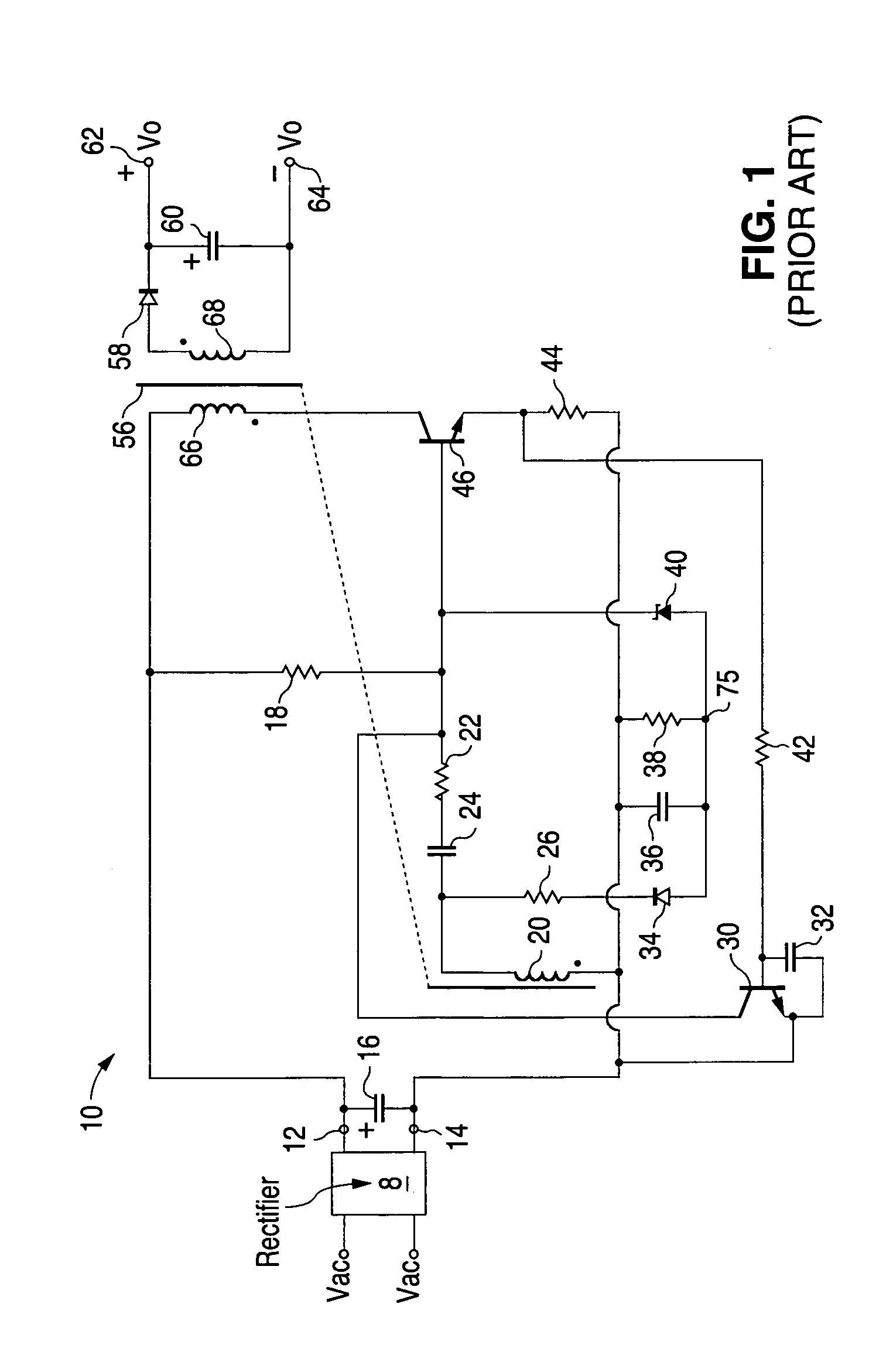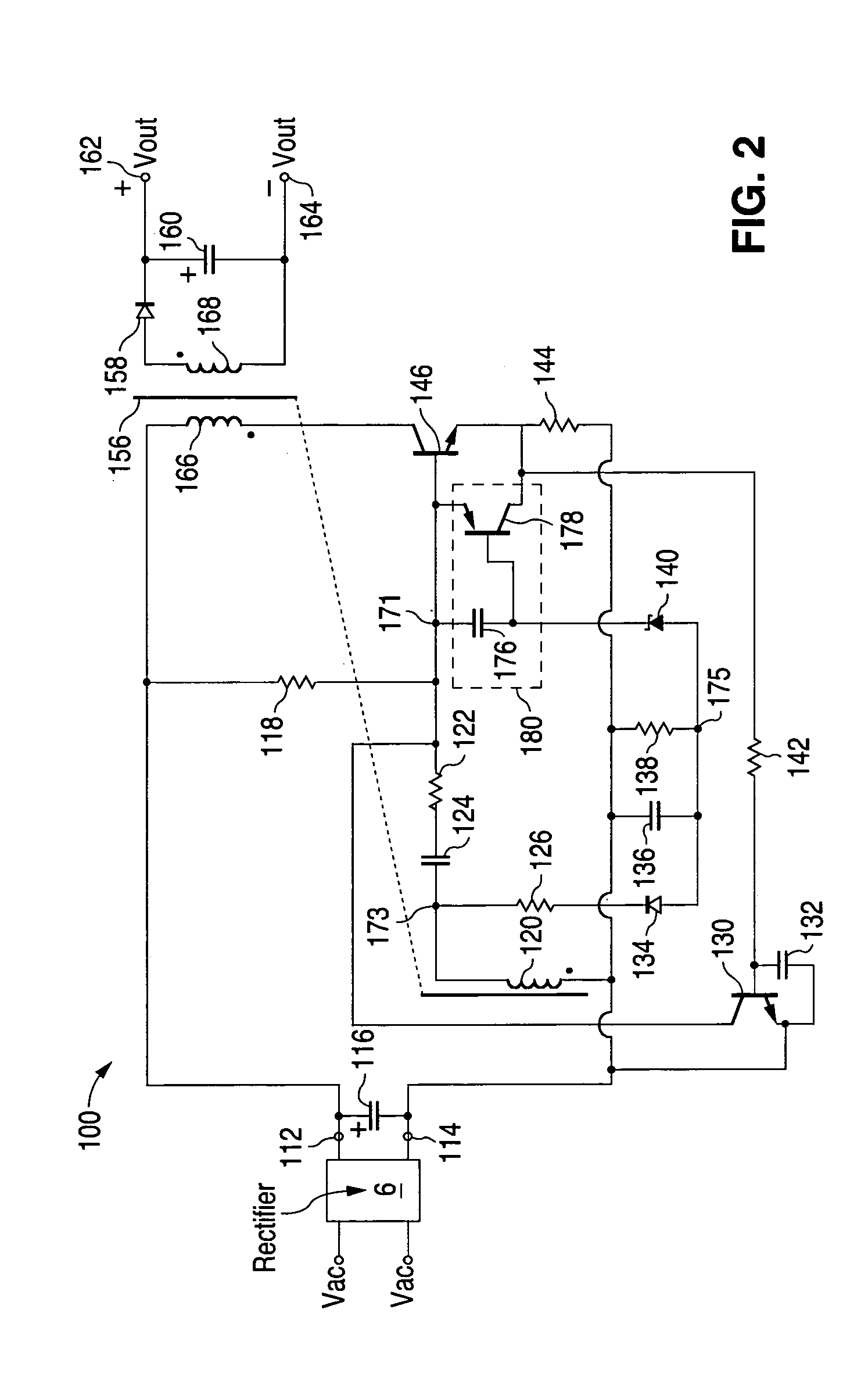Switching-bursting method and apparatus for reducing standby power and improving load regulation in a DC-DC converter
a technology of dc-dc converters and switch-bursting, which is applied in the direction of electric variable regulation, process and machine control, instruments, etc., can solve the problems of significant load on the public electricity supply significant power loss at no-load, and poor output voltage regulation of low power converters designed for open-loop operation. achieve the effect of improving no-load to full-load output voltage regulation, shortening the duty cycle, and prolonging the turn-off tim
- Summary
- Abstract
- Description
- Claims
- Application Information
AI Technical Summary
Benefits of technology
Problems solved by technology
Method used
Image
Examples
Embodiment Construction
[0027]The present invention overcomes the drawbacks of the known RCC circuits and their methods of operation by significantly reducing no-load and standby power consumption and improving no-load to full-load regulation. In a preferred embodiment, the reduction in power consumption and the improved load regulation are achieved through the use of basic, discrete components in the converter circuit. The present invention provides improved output load regulation in open-loop operation. Alternatively, the circuit and method of the present invention may be utilized in closed-loop systems that otherwise exhibit undesirable power consumption at no-load and standby power conditions.
[0028]The present invention is illustrated with reference to FIGS. 2–7. FIG. 2 is a schematic diagram of a preferred embodiment of the circuit and corresponding method according to the present invention. For converter 100 in FIG. 2, an input AC voltage from an external AC source (not shown) is preferably transform...
PUM
 Login to View More
Login to View More Abstract
Description
Claims
Application Information
 Login to View More
Login to View More - R&D
- Intellectual Property
- Life Sciences
- Materials
- Tech Scout
- Unparalleled Data Quality
- Higher Quality Content
- 60% Fewer Hallucinations
Browse by: Latest US Patents, China's latest patents, Technical Efficacy Thesaurus, Application Domain, Technology Topic, Popular Technical Reports.
© 2025 PatSnap. All rights reserved.Legal|Privacy policy|Modern Slavery Act Transparency Statement|Sitemap|About US| Contact US: help@patsnap.com



